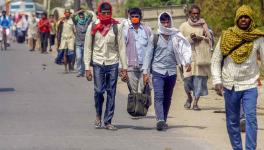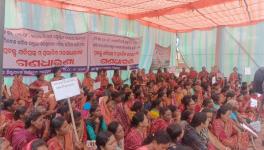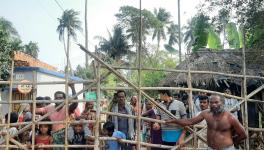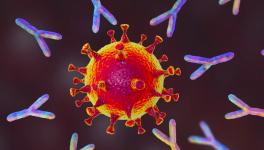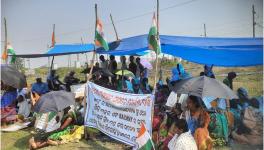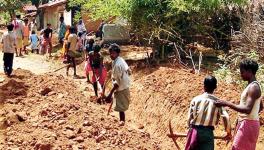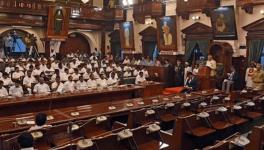How Odisha is Managing COVID-19 in Framework of Universal Health Coverage
When the COVID-19 trajectory witnessed wide variations across states, Odisha, in spite of several health system challenges – low public spending, inadequate health workforce, and difficulties in service delivery -- showed extraordinary efforts in managing the crisis. A state with low resource base, a higher percentage of its population (one-third) staying below the official declared poverty line and 23% Scheduled Tribe population who face multiple deprivations introduced pre-emptive measures to control the infection.
The number of confirmed cases per million were quite low earlier and this has been stepping up since the first week of May after the influx of migrants workers. As on May 18, there were 20 positive cases per million population against the national average of 72, which has gone up to 45 per million on June 1, compared with 143 at all-India level (see table 1).
Odisha’s rank is 4th from the bottom after Kerala, Uttar Pradesh and Bihar in terms of confirmed cases per million. Across states, top four states in terms of confirmed cases per million are Delhi, Maharashtra, Tamil Nadu and Gujarat.
It is further noticed that Uttarakhand saw the highest increase in confirmed cases per million (125.6%), followed by Haryana (70%), Jammu and Kashmir (47%) and West Bengal (44.16%) during the past six days. The lowest rise was found in Punjab (8.75%). In contrast, during the previous week (May 18-26), the percentage rise in million cases was sharp in Uttarakhand (330%), flowed by Bihar (106%), Karnataka (85%) and Odisha (73%). This suggests recurrent changing dynamics across states.
Table 1: Number of confirmed cases per million population across states
Source - https://api.covid19india.org/csv/
In Odisha, it took around 34 days to reach 100 positive cases from the date when the first case was detected. Though, the number of confirmed cases have been rising in recent days, the case fatality rate (number of deaths to confirmed cases) is quite low at 0.46% compared with the national average of 2.83%, and this is second lowest after Bihar (See Table 2).
The case fatality rate in Maharashtra, Gujarat, Madhya Pradesh and West Bengal is above the national average. Further, Odisha’s recovery rate is also higher than the national average. Punjab ranks top in recovery rate among the larger states whereas this is lowest in Karnataka.
Table 2: Case Fatality Rate and Death Across States
Source - https://api.covid19india.org/csv/
Odisha’s success in containing the spread of infection to a reasonable level can be attributed to implementation of an array of measures. The state draws its inferences from past experiences of successfully managing severe calamities – cyclone and flood by minimising human losses. Though managing COVID-19 is enormously different from cyclone and flood, earlier experiences facilitated the state machinery to combat the pandemic in a better way.
The state formed different committees constituting senior bureaucrats, similar to managing cyclone or flood, for transport of essential goods and services, procurement of medicine and equipment for resolving hurdles during COVID-19. Most of the cyclone centres, once used for rescue operations during natural disasters, are being used as quarantine centres.
Odisha has declared COVID-19 as a 'disaster' under the provisions of Disaster Management Act, 2005 to adequately empower public officials to combat the spread of the virus. Active surveillance as the core of prevention and containment of spread of COVID-19 was pursued earnestly.
In this direction, the state announced Rs 15,000 incentive for registration of people those who returned from abroad during March when the spread was limited. This resulted in identification of people who travelled from abroad.
During the initial phase, testing capacity was limited and gradually, testing facility has been expanded. On average, the state conducts to more than 4,000 tests per day. Further, in partnership with public sector undertakings and private organisations, the state has exclusive COVID hospitals and as on June 1, 2020, there are 34 COVID hospitals and around 5,493 beds available in these hospitals to treat patients, as per official figures. Doctors, nurses and frontline health workers have been imparted training on the guidelines for management of the COVID cases and associated aspects.
For engaging grassroots organisations to fight the pandemic, another path-breaking decision was to delegate the power of district collector to the sarpanchas (village heads) under the Disaster Management Act, 2005 and the Epidemic Diseases Act 1897. This is pertinent for effective management of COVID cases by the local authority when thousands of migrants labourers, stranded in different parts of the country, have arrived and are more are expected to arrive shortly.
As per the state government data, 14,795 medical centres have been set up in 6,798 Gram Panchayats with a total 6,28,686 beds. The state government bears expenses for their stay during quarantine period in these centres. Additionally, a financial incentive of Rs.2,000 for returning through government procedures and completing the quarantine period is assured. Any person violating the above will face stringent action under the Disaster Management Act 2005. The decision by Odisha government to involve the community is praiseworthy for effective management of COVID-19.
Current efforts to combat COVID-19 can be explicated in view of Odisha’s blueprint for achieving universal health coverage (UHC), which was laid down by announcing Biju Swasthya Kalayan Yojana (BSKY) in 2018. The scheme aims at providing free healthcare to all citizens of Odisha, irrespective of income, caste and social status at the public health institutions.
Additionally, 71 lakh economically vulnerable households can avail healthcare services from the empanelled private hospitals with financial coverage up to Rs 5 lakh per family and Rs 10 lakh to women members. This intends to reduce out of pocket expenditure (OOP), which constitutes 72% of total health expenditure in Odisha. As a significant proportion of OOP occurs due to medicine and diagnostic services, the state government has also introduced NIRMAYA – distribution of free medicine -- and NIDAN -- free diagnostic services.
Moreover, the state has been taking prompt action to enhance healthcare workforce which stands at 9.6 per 10,000 population against the World Health Organisation’s prescribed norm of 23. These efforts are significant and will complement other efforts introduced, to improve the performance of the health system in the state.
Though Odisha’s strategies to fight COVID-19 are well designed drawing inferences from the philosophy of UHC, there are a number of implementation challenges that the health system is facing and need to be set right. There are short- and medium-term measures that need to be in place.
Currently, the problem has compounded in four to five districts due to exodus of migrant workers. The situation will further worsen in the next one month due to easing of lockdown and inter and intra-state movement of people. Creation of adequate temporary beds for isolation of people with travel history at panchayat level assumes significance at this stage, and management of these centres may be streamlined further. This needs multi-sectoral approach and better coordination among the line departments at the district and below.
The WHO recently said that we are in the midst of the first wave of the crisis globally. Since, the virus has taken hold in some districts of Odisha, the testing capacity, especially among targeted population staying at quarantine centres, should be augmented rapidly. Further, surveillance system should increase amply at the district level and below along with management of data following rigours of data sciences to inform policy decisions
In the medium term, the health system has to prepare adequately to meet the post-COVID hospital rush due to surge of both outpatient and inpatient cases. Several instances of mistreatment of non-COVID patients were noticed during the lockdown period and cautious steps should be undertaken for managing the surge of cases.
Besides attending to the immediate clinical and public health activities in the short run, steps should be taken to restructure the district and block-level health systems by acceptable level of health workforce, diagnostic services and improving supply chain management systems. Therefore, district health planning is key and should consider disease burden, system preparedness and public health activities in order to provide tractions to district trajectories.
The crisis has further accentuated the need for comprehensive primary care. Expansion of comprehensive primary care with enough emphasis on primary prevention can reduce infection and hospitalisation. This creates tremendous economic gain and a low resource setting- Odisha should promptly adopt this strategy.
Moreover, this crisis has spurred the need to invest more on public health. The benefits of a developed public health system are well acknowledged during this pandemic. Therefore, public health spending should be substantially enhanced from the current level of around 1.3% of state gross domestic product or to 2.5% and at least two-third of resources should be diverted to primary care, as envisioned in the National Health Policy 2017.
Given the slower revenue projections due to the economic downturn, resources from the district mineral fund and other potential sources may be explored for health in the state.
The writer is currently is working as an Additional Professor in Indian Institute of Public Health , Bhubaneswar (IIPHB), and specialises on Health Economics and Financing . IIPHB is a part of Public Health Foundation of India. The views expressed here are personal.
Get the latest reports & analysis with people's perspective on Protests, movements & deep analytical videos, discussions of the current affairs in your Telegram app. Subscribe to NewsClick's Telegram channel & get Real-Time updates on stories, as they get published on our website.









